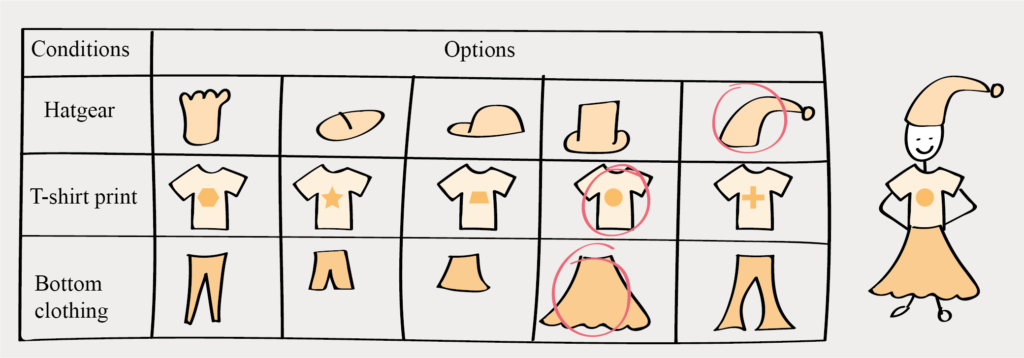CQ24: The 3 secrets of Design Thinking
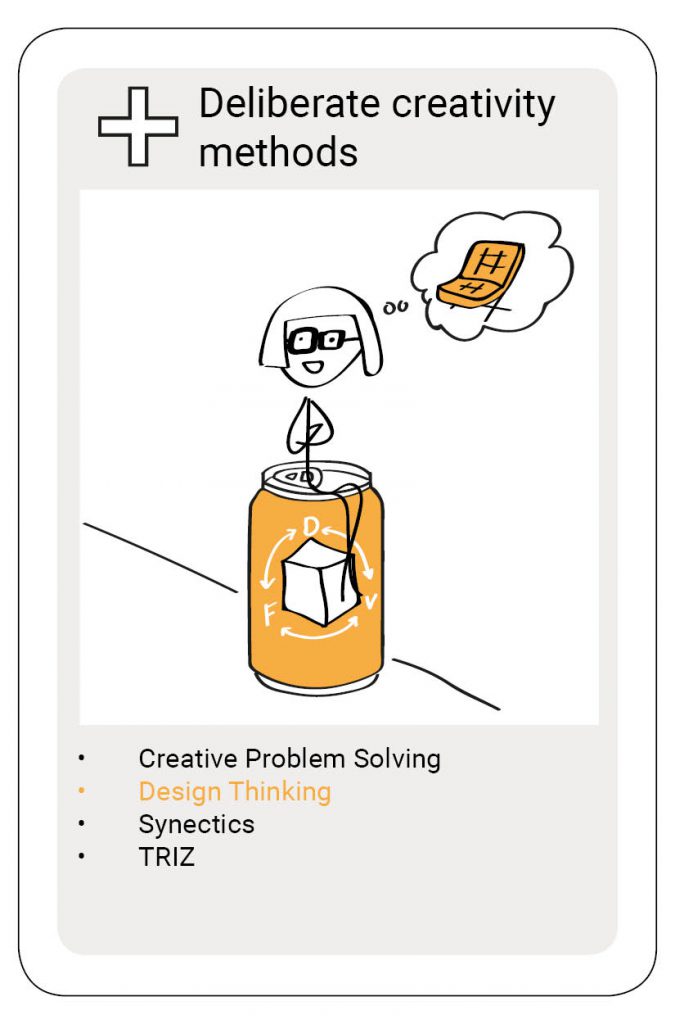 Design Thinking is hot. Most non-design professionals know ‘the design process’ as a method called Design Thinking. A potential reason for its popularity is that designing could be the deliberate way towards creativity and innovation.
Design Thinking is hot. Most non-design professionals know ‘the design process’ as a method called Design Thinking. A potential reason for its popularity is that designing could be the deliberate way towards creativity and innovation.
‘One of the reasons behind the great success of […] the whole notion of design thinking might be that it is an ambitious attempt to actually uncover what guides creativity and innovation’ (Juelsbo, et al., 2017: p.159)
Or as Dorst (2011) puts it:
‘Studying how designers work and adopting some designerly practices could be interesting to these organizations because designer have been dealing with open complex problems for many years, and the designing disciplines have developed elaborate professional practices to do this.’ (Dorst, 2011: p522)
Educated as a strategic product designer myself, on the one hand, I’m happy to see that the of thinking that I find ‘normal’ gets more accepted in the world outside the design bubble.
On the other hand, designing has been greatly misunderstood because especially oversimplified versions of Design Thinking made it through general businesses. Even critique of Design Thinking shows a misunderstanding of the concept.
About this article
The goal I had with this article was to find the relationship between (deliberate) creativity and designing. And preferably also the relation between innovation and problem-solving. I also had the urge to deal with popular Design Thinking methods and provide you with a complementary view of these popular Design Thinking models.
The article focuses on the second goal. However, I put a mark in the text when I see an overlap between creativity and design, designing, or Design Thinking (for me these three concepts are all about how designers work). This is the mark:
![]()
Last article for the moment
For the present, this is the last article I will write for the CreativityQuartet2020 for the upcoming months.
Summer 2020 I need to develop a Minor on Creativity we are starting in September at Delft University of Technology. I need time to develop the Masterclasses on the theoretical ‘why’s’ behind the practical ‘how’s’ on creativity. I need time to give structure to the EACI. I need time to figure out if and how I want to do promotional research. I need time to go on vacation. That leaves me with no time to continue the journey of this quartet at the moment.
I have enjoyed the ride, learned a lot, shared a lot. Maybe I’ll see you in the autumn in one of the Masterclasses. Let me know if there is a specific topic you would be interested in.
But for now, I hope you will enjoy this article.
The 5 parts of this article
This article exists out of five parts. In the first part, I will discuss three models (or methods) of Design Thinking that have made it to the world outside ‘design’. I will explain these models briefly, and give some of the backgrounds of these models.
In the second part, I will go back to basics. I’ll start off on a more philosophical level. I will analyze the word ‘design’, and elaborate on what normal people think of when they discuss ‘design’.
In the third part, I will explain how design became a science, and I will give the history of design theory in a tiny nutshell.
The title refers to the fourth part of this article in which I will share my view on designing.
In the fifth and final part, I will showcase how Designing and Creativity go through the same history, and how they are alike.
Part 1: popular models
IDEO’s three musketiers
Design Thinking became known in business through Tim Brown, and brothers, Tom and David Kelley, from strategic design company IDEO. Tom, Tim, and David are the frontmen of IDEO. They generalized the design process and sold it in a way as ‘anyone can do this.’ Because IDEO co-operates with Stanford University, their method gets an academic touch (Johansson, et al., 2013). That increases the chance of acceptance in business.
The first, Tim Brown, is the current CEO of IDEO. He wrote an article with the ‘Design Thinking’ as title, in the Harvard Business Review in 2008 and a bestselling book called Change By Design in 2009. In that book Design Thinking plays a central role. If you don’t know any better you might think that Tim Brown invented the term Design Thinking.
The second, David Kelley, founded IDEO in 1991. He also the linking pin with Stanford University. At Stanford University, David Kelley founded the Hasso Plattner* Institute of Design (ideo.com/people/david-kelley).
Hasso Platner is an interesting person to look into some other day. Check out his Wikipedia page yourself.
The third, Tom Kelley is the author of the best-selling book: ‘Creative Confidence’, also hold special spots in universities, as his brother does as well (ideo.com/people/tom-kelley).
Design Thinking according to IDEO
IDEO CEO Tim Brown defines Design Thinking as follows:
‘Design thinking is a human-centered approach to innovation that draws from the designer’s toolkit to integrate the needs of people, the possibilities, and the requirements for business success’ (designthinking.IDEO.com).
I opt for changing ‘human’ into ‘stakeholder’. If we call Design Thinking a stakeholder centered approach, we leave room for other animals, and parts of nature to be part of the problem and the solution as well, besides only humans.
According to Brown, design thinking is an ‘approach to innovation’.
![]() I translate that as an ‘innovation method’. Since creativity takes up the biggest chunk of an innovation process (see CQ15), Design Thinking is also a creativity process. Because we use Design Thinking intentionally, the method is also a deliberate creativity process.
I translate that as an ‘innovation method’. Since creativity takes up the biggest chunk of an innovation process (see CQ15), Design Thinking is also a creativity process. Because we use Design Thinking intentionally, the method is also a deliberate creativity process.
d.school five-step model of Design Thinking
I assume it was also under the leadership of David Kelley that the five-step model of Design Thinking was created, though I can’t be sure. I also don’t know if Hasso Plattner was part of the creation of this model. I checked out the website of Hasso Plattner Institute (HPI) in Pottsdam and search for Design Thinking, you will find a six-step model. The one I show here comes from the HPI design school from Stanford.
The five-step method from the d.school looks as shown in figure 1. According to this model, designers first empathize with the user to find latent needs and figure out what the real problem is the user experiences. From that, designers distillate the problem to solve, which is called ‘define’. Then they come with ideas for a solution. We build a prototype to test their ideas, and they test them. We go through this process multiple times until we have reached a satisfying solution.

Figure 1: Based on five step model of Design Thinking, according to d.school, Stanford California.
Weird visual
I am positive that the designers of this model thought about how to visualize the steps. What I don’t understand is that the steps are often portraited from left to right, instead of in a circle to showcase the non-linearity of a design process.
Or the designer thought: ‘Hey, we use hexagons, like in the game Kolonisten, that way you can see these as pieces to build your own model with’. I like it if that is the case.
But I don’t think many of their targeted users will get this when they first come in contact with Design Thinking through this model.
That is my assumption, haven’t checked it, but it seems to me they forgot the first step of their own model, in the visualization of their model :).
We leave California for a moment and go to London, to Winston Churchill’s UK Design Council.
The Double Diamond of Design Thinking
In 2018 my first graduating student wanted to use ‘the double diamond’ as the methodology for her graduation project. I thought, what the [fill out your own swear word] is this double diamond?! Almost 10 years out of university and I miss a complete model? The story of the Double Diamond can be found online on the UK Design Council website.
Winston Churchill’s wartime government established the Desing Council in the last winter of WWII. The goal of this council was to support Britain in its economic recovery. Again WWII was an important factor for change (see CQ2, CQ4, CQ23). Never waste a good crisis…
Richard Eiserman
In 2003 Richard Eiserman, a strategic designer, joined the Design Council (richardeisermann.com) as chief Design and Innovation. He wanted to describe the design process and together with many others, he created the Double Diamond. Interestingly to note is that Eiserman himself explains that he met David Kelley from IDEO in 1995 and refers to it as an ‘eye-opening, and life-changing experience’.
The model
OK, before I go on, I’ll sketch the model, see figure 2.
Figure 2: The Double Diamond of Design, based on UK Design Council’s Double Diamond
The first diamond focusses on the problem (space), the second diamond focusses on the solution (space). Even though this figure doesn’t show it, the UK Design Council also stress the non-linearity of the model (Drew, 2019).
![]() According to current Chief Design, the Double Diamond has its foundations in Creative Problem Solving (Drew, 2019). Whoop there it is!
According to current Chief Design, the Double Diamond has its foundations in Creative Problem Solving (Drew, 2019). Whoop there it is!
To quote Drew (2019):
[…] it is actually based on ‘creative problem-solving’ which has been around from the 1950s (originated by Osborn and Parnes) which argues for a process of multiple rounds of ‘deferral of judgment’ and divergent and convergent thinking. Which is why many people have added smaller and longer diamonds before and after (and within!). As Jonathan Ball explained to us it was built on what was going on before, of convergent and divergent thinking and of ‘kite-shaped’ models, and tried to give more visibility to them.
The similarities between Design Thinking and CPS (see CQ23) move far beyond the creative diamond. I will elaborate on this after part two of this article. We first go back to Silicon Valley for our third popular Design Thinking model.
The Design Sprint
Like ‘Double Diamond’ another term I needed to familiarize myself with when I returned to university. Through fast online research, I figured out that Jake Knapp, a previous Google employee, created Design Sprints. He designed a five-day workshop based on several models on Design Thinking, including the 5-step model from the d.school (thesprintbook.com/how), see figure 3.
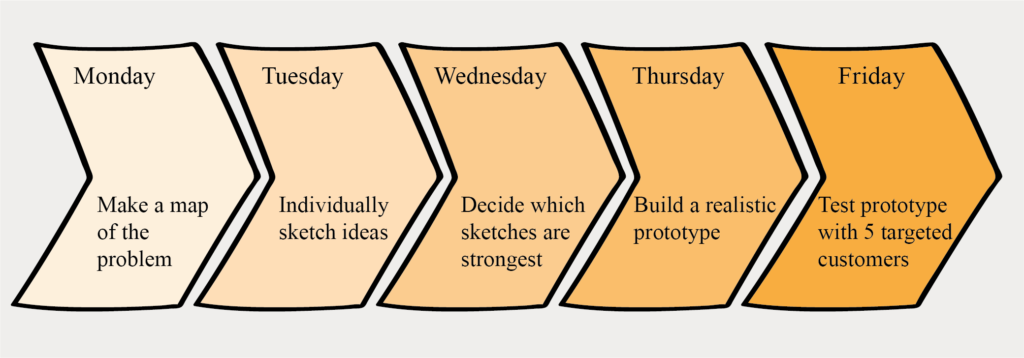
Figure 3: A model of a Design Sprint, based on Jake Knapps Design sprints
A ‘sprint’ is a five-day workshop in which you basically run through the five steps from the d.school model, only Knapp uses different words in this method. That seems pretty straightforward. A well-facilitated Design Sprints can lead to a lot of new knowledge.
Yet what all these models do not specify is why you would take this approach. Furthermore, they all emphasize the process as a x-step, non-linear process. But these models all miss the essence of what lays beneath these design steps.
Let’s take the opposite perspective and start abstract.
Part 2: back to basic
Designing is creating
If we take a philosophical approach we could say that the first tools made by the Homo Habilis were the first designed products (Friedman, 2000). These ancestors of ours were not blessed or cursed with a neo-cortex yet. To quote Friedman (2000, p.32)
‘In fact, the practice of design – making things to serve a useful goal, making tools – predates the human race. Making tools is one of the attributes that made us human in the first place.’
![]() I’m a big fan of this approach. And I think it is why I see so much overlap between creativity and designing; it is about creating. However, this quote also refers to a potential difference between the outcome of creativity process and a design process.
I’m a big fan of this approach. And I think it is why I see so much overlap between creativity and designing; it is about creating. However, this quote also refers to a potential difference between the outcome of creativity process and a design process.
The outcome of a design process must be a tool, whereas the outcome of a creativity process could run from an idea to a tool, to a painting.
Then we should define ‘tool’. When an idea is a ‘tool’ to come to a next idea and when a painting is a ‘tool’ to inspire others or express your emotions, a tool could also be anything. Each outcome is useful in itself. Each new experience you take with you will be helpful in your next creating endeavor.
This might seem like a semantic discussion and therefore not interesting for most of us. But what is interesting for us is that these definitions are all about the result. However, if we want to facilitate and train creativity we need more on the process that leads to these results. What is it that designers do, think, feel when they are designing, and how is that a deliberate creativity method? You can keep that question in the back of your head when reading the rest of this article.
Design: ‘what’s in a word’
You know the verb ‘to designate’? Like the word design, designate comes from the Latin word ‘designare’ which means something like: planning, or executing a scheme. Check out any online dictionary to find these definitions. Planning is a cognitive, conscious, or deliberate activity.
![]() And in this definition of the word design (planning), there is a form of deliberateness we do not find in creativity per se. Planning is a rational and analytical ability that is not often associated with creativity. Creativity can be a spontaneous process, that solely thrives on unconscious processes (see CQ10). And we can come to a creative result without any for of deliberateness when we count in psychosis. Creativity doesn’t feel planned.
And in this definition of the word design (planning), there is a form of deliberateness we do not find in creativity per se. Planning is a rational and analytical ability that is not often associated with creativity. Creativity can be a spontaneous process, that solely thrives on unconscious processes (see CQ10). And we can come to a creative result without any for of deliberateness when we count in psychosis. Creativity doesn’t feel planned.
However, besides the psychosis, creativity (as a process) will always need consciousness action, if only to recognize a good idea or to use normal words, instead of jibberish, to express it. In fact, the way we want to use creativity is very planned. We take deliberate actions to ‘get creative’. We can even take the cognitive decision to use non-cognitive strategies, like mindfulness, to become more creative. Oh oh, the paradox.
Before I get round up in more boxes in boxes I’m zooming out again and discuss the third element in this part of the article. The Normal People approach towards ‘design’.
‘Check out my designer purse.’ or ‘That chair is soooo design!’
I think most people see designers as a sort of artist. They create functional or usable art (in other words, the design tools). As an architect, the stereotype designer preferably dresses in black, topped off with a pair of glasses with a thick black frame.
Design education is often part of Art schools. If we consider our associations with designers, it makes sense. Looking through our ‘Art school lens’ to design, we can understand the importance of the esthetic value of the designed tool, and the expressed of the vision of the designer in their creations.
The ‘design’ of a product
In design as an art-form, the esthetic value of the products is more important than the usability of the product. Thus, when people talk about the ‘design’ of a product they often mean the outer appearance, the looks. Check out a website of a hip product like cool quality headphones and you will find the ‘look and feel’ was created by a ‘designer’. Or they even talk about ‘the design’ of the product.
How do we match this esthetic, ‘arty’ approach to design, with the tool-creation approach from Friedman (2002), with the cognitive planning approach, and with the complex problem-solving view on design?
Two sides of the medal: ars + techne
In CQ2 I wrote that ‘techne’ was the Latin translation for the Ancient Greek word ‘ars’, that meant something like ‘gaining skill through practice and education’. In the historic overview of how we thinking about creation (CQ9), I explained how art and technology moved into different pathways. However, in CQ2 I also explained that in the Industrial Revolution there was a need for a word for the process of creating in technology and art. The word ‘creativity’ brought the two ‘different’ activities of creating art and technology back together.
The arty and technological viewpoints of creativity we also find in design. It is in engineering where we find the roots of Design Thinking.
We go back to the time and place The Beatles scored there first hit: UK, 1962.
Part 3: the history of design theory in a nutshell
How design became a method and a ‘science’?
I will focus on the beginning of design methodology and give you the development in a nutshell. The history is rich and the story you find here is incomplete. The Wikipedia page on Design Thinking is also OK for a non-design theorist and provides complementary elements to the story below.
WWII
WWII didn’t only lead to creativity as a psychology research discipline (Weiner, 2005; CQ2) but also to a discipline that was to describe engineering and planning methods: design. The high need to solve problems was also the incentive to apply novel and ‘scientific’ methods to these problems (Cross, 1993).
According to Cross (1993): ‘the earliest reference in Design Methodology literature is probably Zwicky’s ‘Morphological Method’[..]’ (Cross, 1993: p.15).
Cross (1993) refers to Zwicky (1948). Zwicky was an astronomer (a scientist) by background. Check out Zwicky’s Wikipedia page, he was pretty visionary and apparently the discoverer of ‘dark matter’.
Morphological mapping
In morphological mapping we cut a problem into pieces, we create possible solutions for each subproblem and try to mix and match the different subsolutions into one solution. See figure 4 for an example. Morphological mapping is a cognitive, analytical approach to designing.
Figure 4: Example of Zwicky’s morphological map. Although I’m pretty sure he didn’t use the method to decide how to dress. Or maybe he did, who knows.
Morphological mapping was part of the second design assignment I had as a freshwoman for my studies Industrial Design Engineering in 2001. Almost 20 years later, first-year students still learn morphological mapping in their second design assignment. Some things ‘never’ change :).
Conferences & books on design methodology
![]() When after WWII creativity psychologists came together in Utah for the Utah creativity conferences (Sawyer, 2012), all sorts of engineers, architects, and urban planners, came together in the UK to discuss design methods. The first ‘Conference on Design Methods’ was held in London in 1962 (Cross, 1993). Many conferences followed and the research field of design developed itself through these conferences (Cross, 1993, Cross, 2007; Lloyd, 2017).
When after WWII creativity psychologists came together in Utah for the Utah creativity conferences (Sawyer, 2012), all sorts of engineers, architects, and urban planners, came together in the UK to discuss design methods. The first ‘Conference on Design Methods’ was held in London in 1962 (Cross, 1993). Many conferences followed and the research field of design developed itself through these conferences (Cross, 1993, Cross, 2007; Lloyd, 2017).
In the 1960s the first books on design methodology appeared, Hall (1962), Asimow (1962), Alexander (1964), Archer (1965), Jones (1970), and Broadbent (1973). Bear in mind that all these authors were engineers, architects, or, (urban) planners (Cross, 1993).
Interestingly, Cross (1993) in this overview of books about design methods, also puts creativity books on this list. He refers to Gordon (1961), about Synectics, and Osborn (1963), the revised version of Applied Imagination. Just saying…
The start of design as a science
At the end of the 1960s, in the year the Americans landed on the moon for the first time, design became a ‘science’ through the book ‘The Science of the Artificial’ by Herbert Simon.
![]() His book is viewed as a starting point for the ‘science of design’. In that way, what Simon did for design, Guilford did for creativity: opening up a new research field.
His book is viewed as a starting point for the ‘science of design’. In that way, what Simon did for design, Guilford did for creativity: opening up a new research field.
Many things can, should, and have be said about Simon’s theories. What is important for us is that Simon is a linking pin between problem-solving, creativity, and design. For example, the term ‘problem space’ comes from Simon and is a term we find in both creativity and design theory. If you’re not interested in scientific references, you can skip the next paragraph.
Simon in design & creativity research
![]() Simon made his contributions in both creativity and design theory, but the research fields refer to other publications from Simon. The design research field obviously refers to Simon (1969). Creativity research field uses other publications from Simon, most often Newell et al. (1962) and Kaplan & Simon (1990). I never came across a reference to Simon (1969) in creativity literature! That could be me of course. There is one book that I find in references in both fields: Simon and Newell: Human Problem Solving (1972), which is almost a 900-page book that is standing on my bookshelf, waiting to be read.
Simon made his contributions in both creativity and design theory, but the research fields refer to other publications from Simon. The design research field obviously refers to Simon (1969). Creativity research field uses other publications from Simon, most often Newell et al. (1962) and Kaplan & Simon (1990). I never came across a reference to Simon (1969) in creativity literature! That could be me of course. There is one book that I find in references in both fields: Simon and Newell: Human Problem Solving (1972), which is almost a 900-page book that is standing on my bookshelf, waiting to be read.
Evolution of theory on design
At this beginning of design as a science, designing was described as a ‘mechanical’ process, in other words: 1+1=2. Quite logical if you consider that the creators of these design methods had an engineering background and that Simon was a computer nerd (he is seen as the founder of Artificial Intelligence). Design methodology changes the course of direction in the 1970s.
To quote Cross (1993, p.17):
‘the first generation (of the 1960s) was based on the application of systematic, rational, ‘scientific’ methods. The second-generation (of the early 1970s) moved away from attempts to optimize and from the omnipotence of the designer (especially for ‘wicked problems’), towards recognition of satisfactory or appropriate solution-types (Simon (1969) had introduced the notion of ‘satisficing’) and an ‘argumentative’, participatory process in which designers are partners with the problem ‘owners’ (clients, customers, users, the community).
Wicked problems & the near-death of design as a science
A famous article in the design theory is an article by Rittel & Webber (1973) in which they argue that ‘wicked’ problems, could not be solved through 1+1=2 problem-solving. Since design problems are wicked problems, none of these design methods could actually work.
Also, founding fathers like Alexander and Asimow turned themselves against design methodology because of the mechanical approach towards design. The field was ‘saved’ by Rittel (1973) who proposed that these mechanical approaches were the first generation of design methods, leaving room for researchers to move in new directions towards the second generation of design methods (Cross, 1993; Cross, 2007)
In the awesome eighties of the previous Millenium, a new perspective change the course of theory on design methodology.
A philosophical perspective
Donald Schön gave a new perspective on design theory with a theory called ‘reflection in action’. To explain this concept I’m taking the lazy approach and I’m going to quote Visser (2010) who on her turn quotes Schön (1983).
Schön formulated his view on design in terms of “reflective activity” and related notions, especially “reflective practice”, “reflection-in-action”, and “knowing-in-action”. We interpret the activities underlying these notions as forms of what situativity authors have qualified as “situated action” and “situated cognition”. In “reflection-in-action”, “doing and thinking are complementary. Doing extends thinking in the tests, moves, and probes of experimental action, and reflection feeds on doing and its results. Each feeds the other, and each sets boundaries for the other” (Schön, 1983, p. 280). Reflection-in-action is the reflective form of knowing-in-action: It is Schön’s assumption that “competent practitioners usually know more than they can say” (Schön, 1983, p. 8): this illustrates the classical, generally applicable difference between “knowing how” and “knowing that”.
![]() Schön was educated as a philosopher and his doctoral thesis was on John Dewey’s ‘theory of inquiry’. You might not have heard of Dewey, and I won’t elaborate on his theory here. What is interesting is that Dewey’s theory formed the inspiration for theories on creativity as well (Glaveanu, 2019).
Schön was educated as a philosopher and his doctoral thesis was on John Dewey’s ‘theory of inquiry’. You might not have heard of Dewey, and I won’t elaborate on his theory here. What is interesting is that Dewey’s theory formed the inspiration for theories on creativity as well (Glaveanu, 2019).
Interdisciplinarity
Schön brought a philosophical perceptive to the die-hard engineering perspective on design. Ars + techne meet each other again. The field has developed itself in these two and many more sub-directions. I find it difficult to figure out how I was educated. You would expect that I was educated in the engineering approach towards design. However, the techniques used in education, and the theories used in research by my colleagues, come from all kinds of fields. At our faculty, we have professors who are all kinds of engineers, but also historians, psychologists, and professors with medical education. ![]() Designing is a discipline that crosses through all disciplines, like creativity. It makes complete sense to me that publishers springer in their series of Creativity in the Twenty-First Century, have an edition called ‘Creativity, Design Thinking and Interdisciplinarity’.
Designing is a discipline that crosses through all disciplines, like creativity. It makes complete sense to me that publishers springer in their series of Creativity in the Twenty-First Century, have an edition called ‘Creativity, Design Thinking and Interdisciplinarity’.
Part 4: my 3 secrets of Design Thinking
I was shocked. In my online research to the Double Diamond, I found a document containing 150 models on design. 150! The document is available online, here. In this list of 150 models, I even missed most models I know as a designer. I felt it was undoable to study all these models in the two extra weeks I had for this article. I thought, let’s move beyond the models to see what lies beneath all these models, and what it is that truly defines Design Thinking. Since we have to do with an interdisciplinary field, that turned out undoable as well.
Thus, the essence I will describe here is the one that resonates most with my personal feelings about the topic. I also think these secrets as I call them, clarify the popularity of Design Thinking, and can be helpful in the practical use of Design Thinking.
The story of the negotiators and the orange
My first job outside the world of Design was in the non-profit sector, I was a trainee. I did a project on Collective Labor Agreements and worked together with unions and employers associations. This is a world of negotiation. I heard a story about an orange that is famous among trainers in negotiating because the story always seemed to enlighten the participants.
Two parties both want the orange. Thus, the orange is cut in half and they both get half. No questions asked. If the parties would have investigated the situation, they would have learned that one party wanted the peel of the orange and the other party wanted the flesh of the orange. They didn’t check each others’ motives, they didn’t take the effort to find the real problem in the situation.
The fact that this story enlightened participants was a surprise for me. I figured that investigating the problem would be the first logical step to do. In the projects I did as a student, I was used to spending about half the time of a project, and preferably even more time, on analyzing the problem. I learned that in the ‘real world’ a problem given by a boss or colleague is often accepted as such. This difference in approach in problem-solving is the first secret of design thinking.
Secret 1: Understanding complexity
When a task is given to designers, we intuitively define a problem space (there is Simon again), and we start analyzing the problem critically, but with an open mind. We try to get a ‘feeling’ for the system of the situation to be able to better pinpoint where the ‘real’ problem lies. That means we map the actors (people) and factors (hard stuff, things, money, time) and the relations between them.
And that, my friends, is why we listen to people and try to empathize with them. We are trying to understand all points of view, we try to figure out all stakes.
But we are not only trying to figure out what people think. We also need to know what it is that they DO. What people do is always different from what they think they do.
Example
Let’s say we want to increase inspirational moments at the coffee machine in the office, but we have to keep 1,5m distance from each other. In our quest to understand the complexity of the situation, we start asking some questions. But not any question will be helpful.
When you ask someone: ‘how do you get your coffee?’ You will get an answer like: ‘I get up from my chair, walk to the coffee machine, and get a coffee’. If your lucky the answer includes ‘I push the button of the machine’.
That is an answer that doesn’t give us much information about the situation.
We want to know what he thinks when he goes for the machine. At what time he goes. Where he gets his cup. If he reuses his cup. If he also goes to the toilet when he gets a coffee. If he first selects what he wants, and then puts his cup at the right place, or vice versa. If he likes the place where the cups stand, etc. etc. etc. This is why we observe, and if that is not possible we ask very detailed questions.
With this detailed type of information, we identify all elements that could not only be part of the problem but also of the solution. In this case, maybe the solution is to move the cups to a different spot in the kitchen.
Framing
In design terms, this activity of finding the boundaries of the problem space is called ‘framing’. According to Dorst (2011), the word comes from key work in design theory: Schön (1983). Framing is the core of design practice (Dorst, 2011). I have some colleagues that are fans of this view, I also have some colleagues that disagree. I agree insofar that I recognize the activity, I don’t know the theory well enough to form a more solid judgment.
Framing and popular models
I hope I made it clear that framing is more than empathizing and more than simply analyzing the elements in the situation. In that way, I like the word Discover in the Double Diamond as the first step, better than the word Empathize in the first step of the 5-step Design Thinking plan from IDEO. Though I don’t believe that discovering is only a diverging task, as it looks like in the Double diamond. See a copy of Figures 1 and 2 below.


Framing is a productive task
Framing is not only a reproductive* task. We are dealing with complex situations in which criteria are floating. We never know if we are dealing with hard criteria or mere assumptions. Therefore, framing needs ideas, need new ways of looking at things, needs creating power.
![]() If designing is a deliberate creativity method, deliberate creativity doesn’t start when the problem is defined, and when we start to come up with ideas for the solution. No, creativity starts with the decision to start a search. In the words of Wallas (1926, CQ18), creativity starts with ‘preparation’.
If designing is a deliberate creativity method, deliberate creativity doesn’t start when the problem is defined, and when we start to come up with ideas for the solution. No, creativity starts with the decision to start a search. In the words of Wallas (1926, CQ18), creativity starts with ‘preparation’.
*Analyses is reproductive, syntheses are productive. In 1945 Gestalt Theorist Max Wertheimer wrote a book called Productive Thinking (see CQ11). In Guilford’s ‘Structure of Intellect,’ he names to types of productive thinking: divergent thinking and convergent thinking (see CQ16). In productive thinking we add something to the situation ourselves, we are creating.
Because framing is such a complex we need structure. In a world where complexity rules, creating structures is what we do. That brings me to the second secret: conversation tools.
Secret 2: Conversation tools
Visual facilitation* is a booming business. Lego Serious Play is a booming business. Serious gaming is a booming business. All for the same reason. To be used as conversation tools, to help in a dialogue, to help understand the relations between actors and factors, to understand complexity.
These drawings, Lego buildings, or games must support dialogue. A nice drawing that does not help in the dialogue is a nice drawing but not a good conversation tool. Designers draw to communicate, not to make art (excluding the designers that make arty chairs, etc.).
Tip: You want to pick a visual facilitator to make visual minutes of your meeting? Think in advance what you want to get out of that. Do you want a nice memory, or do you want a visual that helps you in your next steps of a project? If you want the latter, check out his/her work and look for metaphors, structure and, arrows in the drawings.
Conversation tools are a form of prototypes
The word prototype is more often associated with an almost finished version of a product. Prototyping happens to see if the product meets the requirements. We do tests with prototypes.
However, drawing, gluing a structure together from old packing material, even ideas on post-its, are all forms of prototyping. We start prototyping when we start framing. Thus, we start creating right from the start, hence the productive nature of framing.
Conversation tools and popular models
Again, I think that the five-step model from IDEO is incorrect. To decide upon the problem to solve (the second step: define), we take steps 3, 4, and 5 from the model. We create hypotheses about the situation (ideas), to get clarity about our hypotheses, we create conversation tools (prototypes), and we use them in dialogue (the test).
Secret 3: abstract (head/heart) & concrete (hands)
In a way, designers are like philosophers: we question everything. Designers are different from philosophers in the way that we go we don’t stay conceptual. We jump back and forth from abstract questioning to concrete doing.
Designers use conversation tools (concrete) to frame (abstract). Making and thinking go hand in hand. Hand and head/heart I should say. In other words, designers think with their hands. We should not underestimate the importance of hands, the making process. I dislike the fact that this digital revolution seems to underestimate this crucial factor.
Reading an e-book is different from reading a real book, no matter how convenient an e-book may be. Your skin, the touch sense, is the biggest organ of your body. Think about it.
Conclusion: Designers are managers pain in the *ss
There is a reason why Design Thinking is difficult to apply in organizations with many hierarchical layers. Design thinkers will challenge the assignment given to them. We don’t accept an assignment, without understanding why it is a problem. Instead of moving forward and start a solution-finding process, we start a problem-finding process. Is this assignment really the problem? Not all managers like to be challenged this way. The risk of the not-knowing the results is killing in these situations. Paradoxically, the entire idea of innovation is not knowing the result.
Because designers are constantly checking if they are solving the ‘real’ problem, the risk of creating a bad solution is lower. But more importantly, the risk of creating a good solution for the wrong problem is lower. I think that this is the reason why so many of these ‘innovation projects’ fail: good solutions for wrong problems.
To use design as a deliberate creativity method has an impact on the way we organize ourselves. That is why some see us as a breath of fresh air and others see us as cockroaches that need to be exterminated.
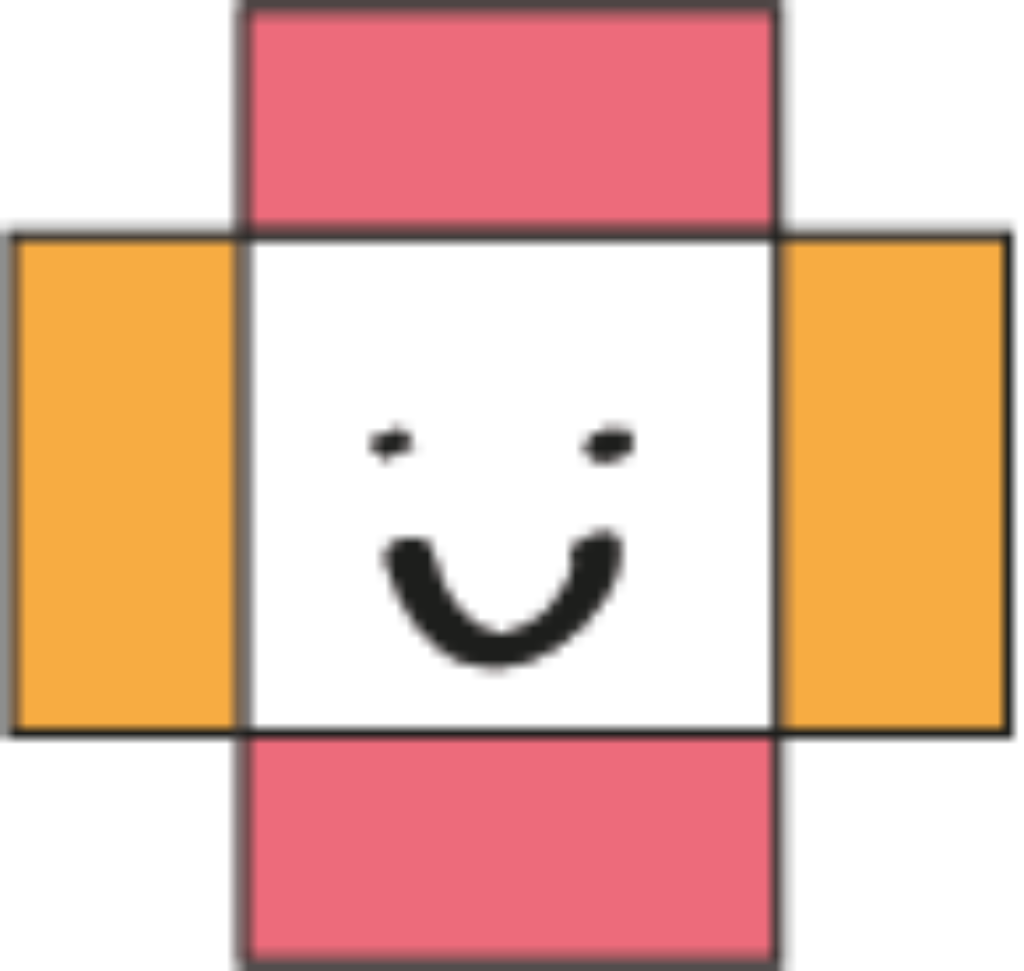 Part 5: Design & Creativity: history repeating
Part 5: Design & Creativity: history repeating
Theory & Practice
Design Thinking is going through the same process as Creative Problem Solving did in the 1950-1960s. Psychologists in the 1950s came together in Utah and Parnes, representing CPS was solely tolerated. Yet, CPS was popular in business, and remains to be a popular method among creativity practitioners. The other way around, I wonder how many business practitioners were aware of the fact that psychologists were working on an entire body of knowledge on creativity.
This disconnection between theory and practice we now see with Design Thinking. IDEO is thriving on their popular model of Design Thinking. I have colleagues frustrated by the Design Thinking models from consultancies, some suggested that we should just ignore these models.
There is even a resemblance in the societal context that could explain the popularity of CPS and Design Thinking. In the 1950s it was WWII and the Cold War urging methods to solve these problems. We now have the digital revolution and Climate Change as complex problems that are making us desperate for problem-solving methods.
The perspective from a practical point of view is clear: we need ways to solve problems. That brings us back to Friedman (2000), we need tools to survive. Fire to keep us from the cold, etc.
Practice: Design Thinking = CPS
David Kelley is the Alex Osborn of our time. The d.school he founded in Silicon Valley, is the CEF Osborn founded in Buffalo. Kelley was a practitioner, Osborn was a practitioner. Though Kelley didn’t need ‘a Parnes’ to put an academic touch to his model because he was working at the University of Standford himself.
The IDEO Design Thinking model very much resembles the CPS-model (see CQ23) and a reminder below. If we peel off these methods we see that CPS and these Design Thinking essentially exists out of two dualistic processes:
Problem – Solution & Diverging – Converging
That means that the Double Diamond model sums it up the business or practice models on Design Thinking pretty well. Besides the fact that the force fit of one Diamond in the problem phase and one diamond in the solution phase seems one step too far in the simplification.
Theory: Simon = Guilford
Design and Creativity both have a scientific work that marked the take-off for the topic as an ‘official’ research discipline. For creativity, it was Guilford’s 1949 APA-speech that was published in 1950. For design, it was Simon’s book from 1969.
Different perspectives
The ‘official’ science of design is therewith younger than that of creativity, thus it makes sense that design uses insights from creativity research. However, with Guilford, creativity started out as a psychological discipline. Simon took a computer science approach to design. But also before Simon turned design into an official research discipline, all sorts of engineers were already coming together in the UK to discuss design methodologies, starting in 1962 (Cross, 1993). Thus, design started out as an engineering discipline.
Here is a thought.
Because creativity is researched by psychologists much focus in on head-stuff. The idea is the creative product of the mind. In engineering, the focus is not on head-stuff but on hands-stuff, artificial stuff, non-living structures. Is that what separates humans from other animals, we can create non-nature from nature? I don’t know.
What I do know is that the role of Heart (emotions, affect) is a topic in psychological creativity research, but I miss the role of hands in creativity research. I believe that deliberate creativity is an interplay of Head, Heart, and Hands. Let’s not forget the third H.
What’s next
I normally end these articles with an introduction to next week’s article. That I cannot do today. What’s next? Who knows!
For now, I like to thank you again for reading, don’t forget to check out the Masterclasses, and I wish you a pleasant continuation of your day.
Willemijn
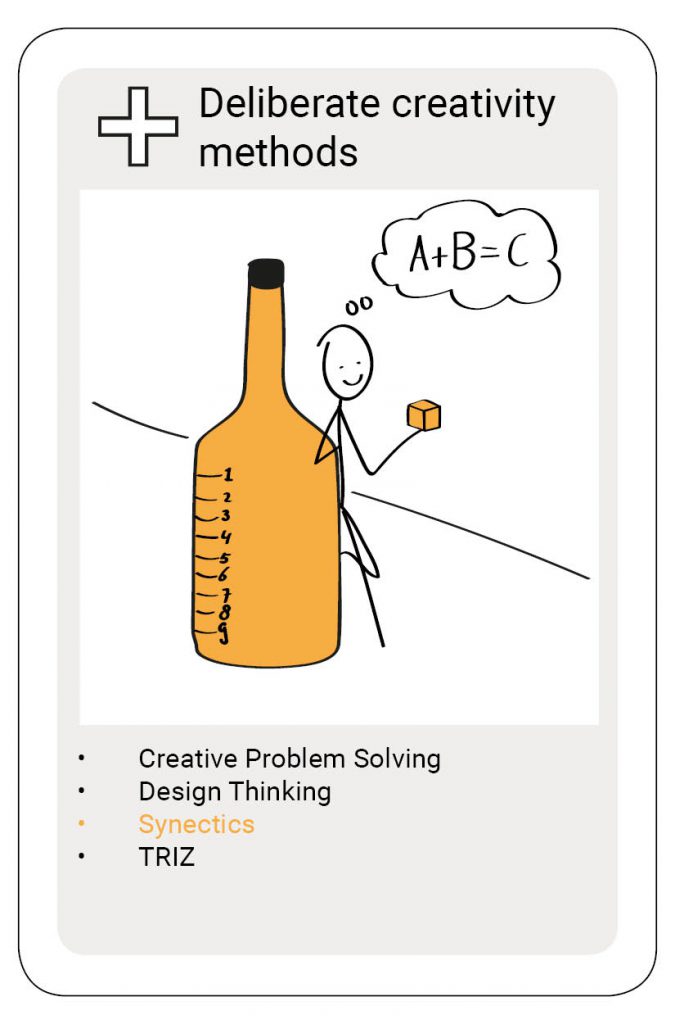
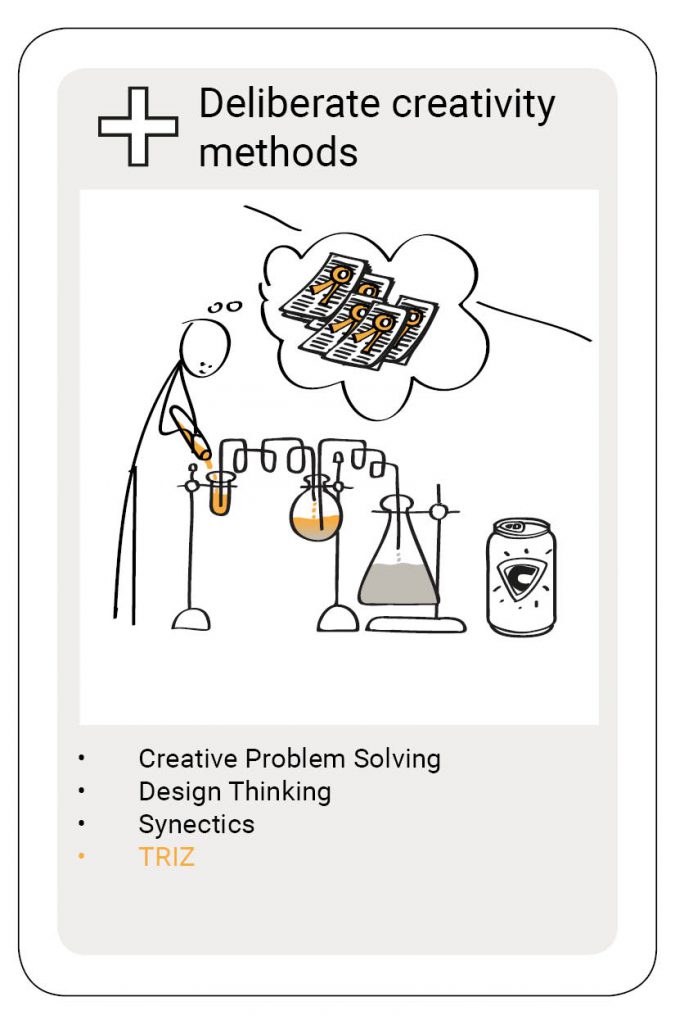
The creativity quartet combines my knowledge of and experience with creativity. Just like any other person I have experience with creativity as long as I live, but more deliberate when I started studying Industrial Design Engineering in 2001. I have over fifteen experience in facilitating and training creativity. My interest in creativity theory started in 2015. And I’m currently looking into doing promotional research on creating an overview of creativity theories. What you read in the articles are my interpretations of the truth. If you have something to add to that, please do so. Ending with my favorite quote on creativity by Maya Angelou:
“You can never use up creativity. The more you use, the more you have.”
References
- Brown, T. (2008). Design thinking. Harvard business review, 86(6), 84.
- Brown, T. (2009). Change by design: How design thinking creates new alternatives for business and society. Collins Business.
- Cross, N. (1993). A history of design methodology. In Design methodology and relationships with science (pp. 15-27). Springer, Dordrecht.
- Cross, N. (2007). Forty years of design research. Design studies, 1(28), 1-4.
- Dorst, K. (2011). The core of ‘design thinking’ and its application. Design Studies, 32. pp. 521-532.
- Friedman, K. (2000). Creating design knowledge: from research into practice. IDATER 2000, 1, 28.
- Glăveanu, V. P. (ed.) (2019). The Creativity Reader. New York: Oxford University Press.
- Guilford, J. P. (1950). Creativity. American Psychologist, 5(9), pp. 444-454.
- Johansson‐Sköldberg, U., Woodilla, J., and Çetinkaya, M. (2103). Design thinking: past, present and possible futures.” Creativity and innovation management 22(2), pp. 121-146.
- Juelsbo, T., Tanggaard, L., and Glaveanu, V. P. (2017). From Design Thinking to Design Doing. pp. In Darbellay, F., Moody, Z., and Lubart, T. (Eds.). Creativity, Design Thinking, and Interdisciplinarity. Singapore: Springer. pp. 149-167.
- Lloyd, P. (2017). From design methods to future-focused thinking: 50 years of design research. Design studies, 48, A1-A8.
- Newell, A., Shaw, J., and Simon, H. (1962). The process of creative thinking. In H. Gruber, G. Terrell, and M. Wertheimer. (Eds.). Contemporary approaches to creative thinking. New York: Atheron Press.
- Newell, A., and Simon, H. A. (1972). Human problem solving (Vol. 104, No. 9). Englewood Cliffs, NJ: Prentice-Hall.
- Rittel, H., and Webber, M. (1973). Dilemmas in g General Theory of Planning. Policy Sciences, 4, pp. 155-196.
- Sawyer, R. K. (2012). Explaining Creativity: The Science of Human Innovation. New York: Oxford University Press.
- Simon, H. A. (1969). The science of the artificial. Cambridge. MA. MIT.
- Visser, W. (2010). Schön: Design as a reflective practice. Collections, Parsons Paris School of arts and design. Art + Design & Psychology, pp.21-25.
- Weiner, R. P. (2005). Creativity & beyond: Cultures, values and change. Albany, NY: State University of New York Press.
- designthinking.ideo.com
Websites: retrieved June 2020
- ideo.com/people/david-kelley
- (ideo.com/people/tom-kelley)
- richardeisermann.com
- thesprintbook.com/how
- Drew, C (2019) https://www.designcouncil.org.uk/news-opinion/double-diamond-15-years
References from Cross (1993) and Cross (2007)
- Alexander, C. (1964). Notes on the Synthesis of Form. Harvard University Press., Cambridge, MA.
- Alexander, C. (1971). The stage of the art in design methods DMG Newsletter Vol 5 No 3 pp 3-7.
- Archer, L. B. (1965). Systematic Method for Designers. The Design Council, London.
- Archer, L. B. (1979). Whatever became of design methodology? Design Studies, Vol 1 No1 pp 17-20.
- Asimow, M. (1962). Introduction to Design. Prentice-Hall, Englewood Cliffs, NJ.
- Broadbent, G. (1973). The Development of Design Methods. Design Methods and Theories 13(1), pp 41-45.
- Gordon W. J. J. (1961). Synectics: The development of creative capacity. New York, NY: Collier Books.
- Hall, A. D. (1962). A Methodology for Systems Engineering. Princeton, NJ, Van Nostrand.
- Jones, J. C. (1970). Design Methods. Chichester, UK, John Wiley & Sons Ltd.
- Osborn A. F. (1963). Applied Imagination: principles and procedures of creative problem solving. 3rd revised edition. New York, Scribener’s Sons.
- Rittel, H. (1973). The State of the Art in Design Methods. Design Research and Method (Design Methods and Theories) 7 (2), pp. 143-147.
- Schön, D. (1983). The Reflective Practitioner: How Professionals Think in Action. Temple Smith, London.
- Zwicky, F. (1948). The Morphological Method of Analysis and Construction. In studies and Essays. New York, Interscience.
Tags:
SUGGESTIONS FOR FURTHER READING

CQ14: What is Creativity?
Understanding how people create has been a serious topic for philosophy since the Renaissance (CQ9). But when Guilford acknowledges creativity to be a

CQ13: Could Einstein paint like Picasso?
Could Einstein paint like Picasso? No. And Picasso was no brainiac like Einstein was. We give both men credit for their great creative contributions,
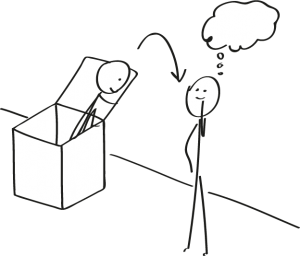
CQ5: Creativity is thinking outside the box. But which box?
The phrase ‘outside the box’ is often associated with creativity. Besides outside the box thinking, there are outside the box methods, outside the box
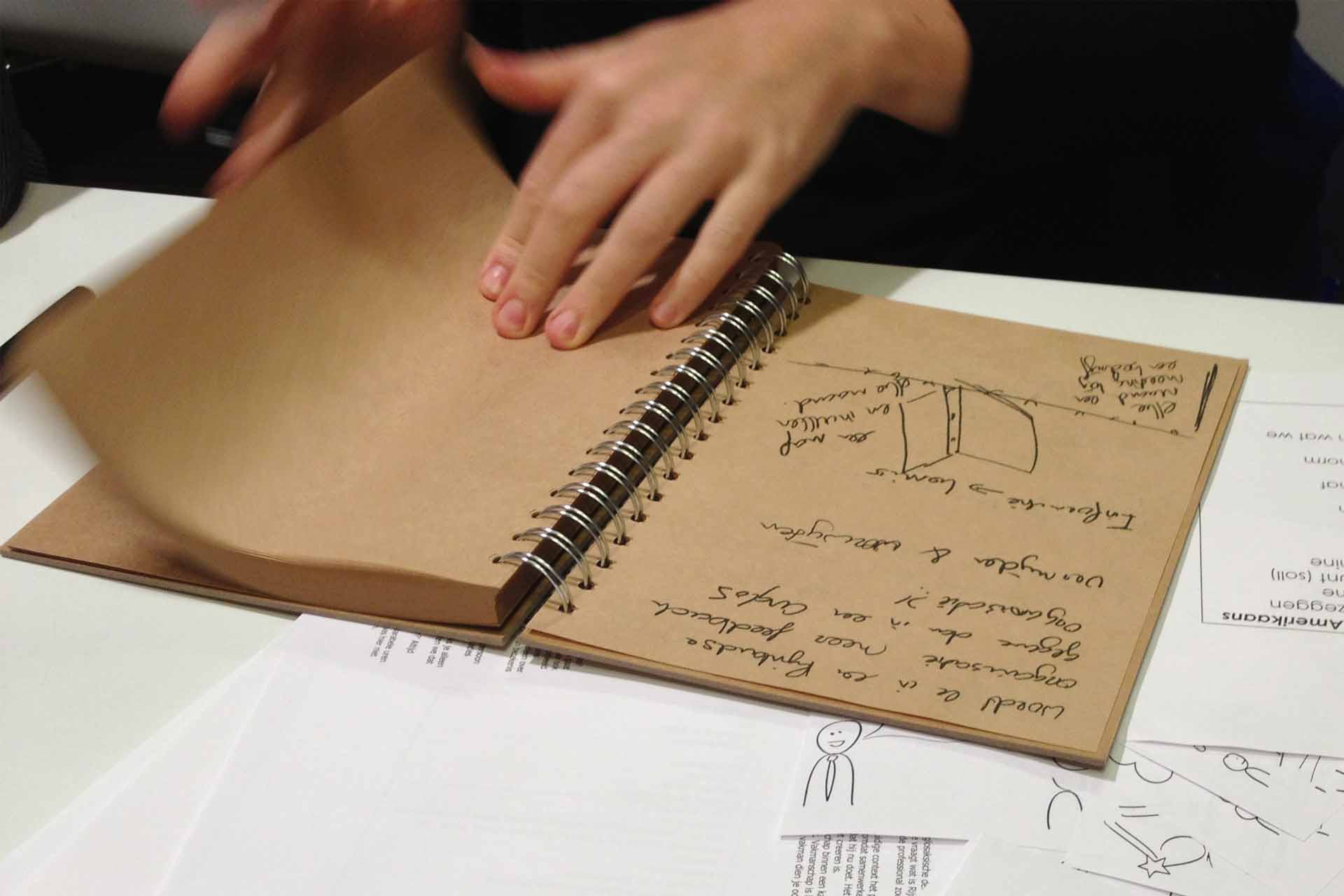
Title photo
Inspiration for inspiration
Would you like to receive the Creativity Quartet 2020 as inspiration? Think about how you can inspire us. For example, we have a coffee, you send us a book or article, link us to a person, point us to a website, etc. Leave your name and e-mail address and we’ll contact you for further information. We will not use your e-mail address to send you offers and won’t give away your information to other parties.



